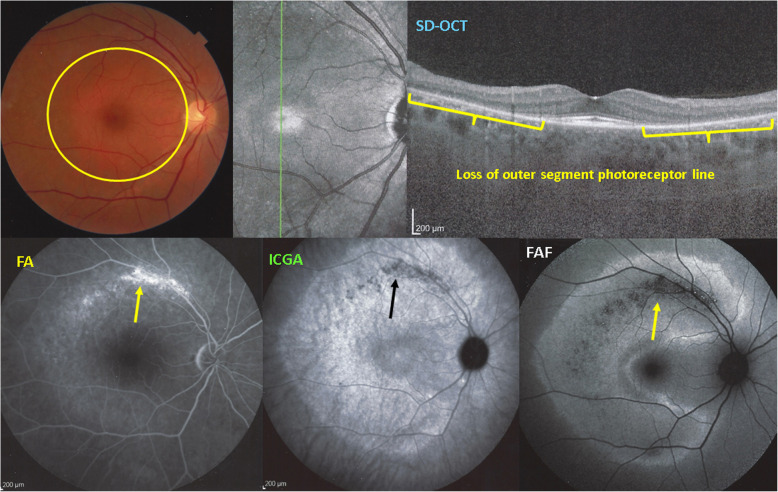Fig. 16.
Example of AZOOR, a true primary phoreceptoritis with Imaging illustration of its clinicopathology. Fundus shows a pale discoloured halo around the fovea which retains a normal colour (top left, yellow circle) due to loss of photoreceptor photopigment. FA (bottom left picture) shows the same halo of discreet hyperfluorescence due to photopigment loss and an area of bright hyperfluorescence (window effect) along superior temporal arcade due to chorioretinal atrophy (dark on ICGA - bottom middle- and FAF – bottom right). ICGA (bottom middle) shows preserved choriocapillaris (except in the arciform area of chorioretinal atrophy) with increased fluorescence in the area of loss of the screen of photopigments which explains also fundus hyperautofluorescence (bottom right). SD-OCT (top right) shows the loss photoreceptor outer segments

